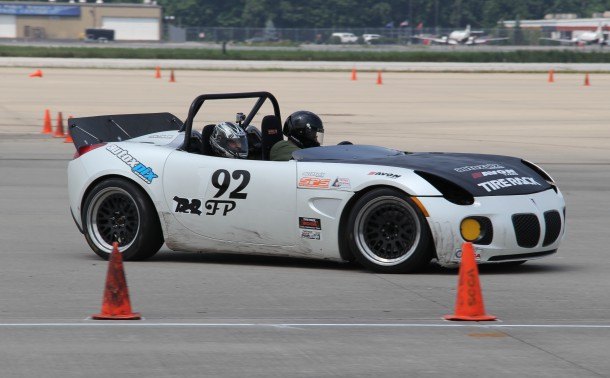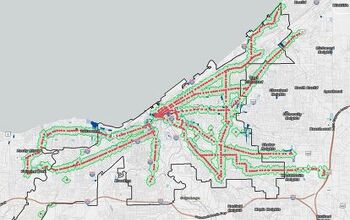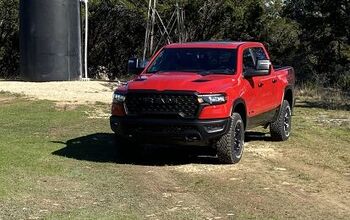Smooth is for Suckers
Smooth is Fast.
The Holy Trinity of proper racing technique is completely wrong — at least if you want to be a champion driver. Onboard videos from F1, WRC and the various touring car series show there is so much more to it. The racecar is thrown into corners with supreme confidence and caught with the deft but quick hand movements that seemingly defy all laws of physics, running completely counter to the smooth is fast dogma.
So why do modern ultra-competitive racing techniques look nothing like what you were taught in driving school or read in a book?
The answer lies mostly in reducing the transition times between maximum acceleration and maximum cornering.
If a driver knows a car can go through a corner at a certain speed and steering angle, there is no reason to waste time getting to that precise velocity. Lost time is simply that — you lost.
The next time you’re strapped to your couch watching a Formula 1 race, take note of the driver’s hands on corner entries. The movement should be confident and fast and then slow down just as the maximum cornering forces build. The steering wheel is used to balance on the hairy edge of adhesion with little flicks that vary only with grip levels. It seems easy, until you realize the velocities at which these folks are trucking along. Lewis Hamilton’s pole-setting lap at this year’s Monaco GP is just one such example.
This fast and nasty driving is sometimes called “Pitch and Catch” as the car is chucked violently into a corner and then carefully gathered up as it nears the apex. There are subtle differences in technique when applied to different types of driving. The high grip of race tires on a dry track will have lower amplitudes of hand motion mid-corner, while the low grip of a rally car will have more relative hand motion during this dance of speed. It’s quick and looks incredibly violent from a cockpit camera point-of-view.
Ari Vatanen’s epic run at the 1983 Manx Trophy Rally (Isle of Man) is a textbook lesson on this:
Transition times during braking must also be reduced. There should be little or no time lost between wide-open throttle on a straight and a braking point before the next turn. Coasting between gas and brake isn’t going to win you anything, nor is being light-footed with the middle pedal. You must use your brakes hard — but not for too long.
One common characteristic of champion drivers is not slowing the car too much on corner entry. A faster driver will trail off the brakes earlier in the turn at a higher velocity. This can be seen on data acquisition traces of velocity vs time as a slower driver’s speed will trend downwards earlier and lower than the leaders. Slow in, fast out is replaced with fast in, fast out as the racer progresses through the field.
By entering the corner at a higher rate of speed, the overtaking car will appear to be doing the passing under braking. This can create an illusion of a faster driver adhering to the slow in, fast out mantra. In reality, it’s more correct to think of this racer ending the braking sooner than a slower competitor. The faster car is faster at that point on the track and has the skills to back it up mid-corner.
This holds true for autocross as well. Witness champion autocrosser, Mark Daddio:
Before you run off and plant your car firmly into a ditch ( or into a tire wall — too soon?), we must remind you there’s a reason schools preach slow hands and smooth movements are better. And they are, especially for novices who still need to learn basic car control skills or even the way around a racetrack.
It’s very easy to overload the tires with quick jabs and stabs. If an instructor tells a novice driver to move their hands quickly on corner entry, they’ll typically overshoot their hand movements. This will upset the car and the novice doesn’t have the talent and experience to adjust and countersteer midway through the curve, especially if anything unexpected happens. This goes double on the street.
How do you get from slow hands to fast driving? Like the old joke about how to get to Carnegie Hall — “Practice!” With experience, you build speed incrementally, one almost-botched corner at a time. The act of saving your ass lap after lap slowly trains your eyes, feet and hands to work together at the limit.
Don’t worry about being smooth — smooth is for suckers.
More by Per Schroeder
Latest Car Reviews
Read moreLatest Product Reviews
Read moreRecent Comments
- Master Baiter Ditch the Giga-casting and Robo-taxi. I'd rather have a turn signal stalk.
- Pig_Iron If it's not hurting anyone, what's the problem? We have a lot bigger problems to deal with like the failure to prosecute the 5-29 insurrectionists. ✌
- MaintenanceCosts This is already illegal for several reasons. Is this a new redundant law, or is this just an announcement that the police are actually going to be enforcing the law as is?(Also, most lifts at all 4 corners are illegal too, although it's almost never enforced.)
- Jkross22 I get Lexus much more now, especially this era. This seems to be the sweet spot for reserved styling, comfort and reliability. No turbos, integrated screen, hard buttons and knobs, good to great stereos, great seats. Still have some pangs of desire for the GS-F for all of the above reasons and V8 sounds, but this is the smarter choice.
- Canam23 I had a 2014 GS350 that I bought with 30K miles and the certified unlimited four year warranty. After four and a half years I had 150K miles on it and sold it to Carmax when I moved to France a little over two years ago. As you can see I ran up a lot of work miles in that time and the Lexus was always quick, comfortable and solid, no issues at all. It was driving pretty much the same as new when I let it go and, and, this is why it's a Lexus, the interior still looked new. I bought it for 30K and sold it for 16K making it the most economical car I've ever owned. I really miss it, if you have to drive a lot, as I did in my job, it is the perfect car. Some may argue the Camry or Accord would foot that bill, but I say nay nay, you really want the comfort and rear wheel drive of the Lexus. Keep it forever Corey, you won't regret it.


































Comments
Join the conversation
I think at the rank amateur level there's also a total lack of appreciation for how much grip cars have. I ran an (abortive-due-to-engine-failure) Chump Car race at Watkins Glen the other week. I have tons of experience in simulators - and I mean high end stuff, not a PSOne; I make the machines that racing teams buy to train their guys - but none in actual cars. But despite my Miata's engine being way down on power, and people blowing by me like I was standing still on every straight, I was going by them again in the corners. Hands-full of guys, outside, inside, through the middle; I was trying to be conservative as it was only my first time in a race car and I *couldn't help buy go by* because they were slowing down SO MUCH in the corners. So, talking about braking points or steering technique, for a lot of guys is clearly way beside the point, because even when they're taking the right line they're just slowing down until they're applying street-driving levels of grip to the car anyway. Smooth is all well and good, but the first step is to get guys to understand *just how hard they can push a car*, even a mildly-prepared car on street tires.
The part you are missing is that smooth inputs does not necessarily mean slow inputs. The reason to be smooth is to not break traction as you build up to the limit. Like streaching an elastic band as far as possible without snapping it. Corrections work in the opposite direction, as you already lost traction and so want to get back under it as quickly as possible. Also, gravel and snow you want to go over the traction limit to get the tires to dig in and find more traction. The more grip, the faster your inputs can be, so F1 drivers might look like they are being brutal, and they would be if they were driving a street car, but the motions are still smooth, just much accelerated.